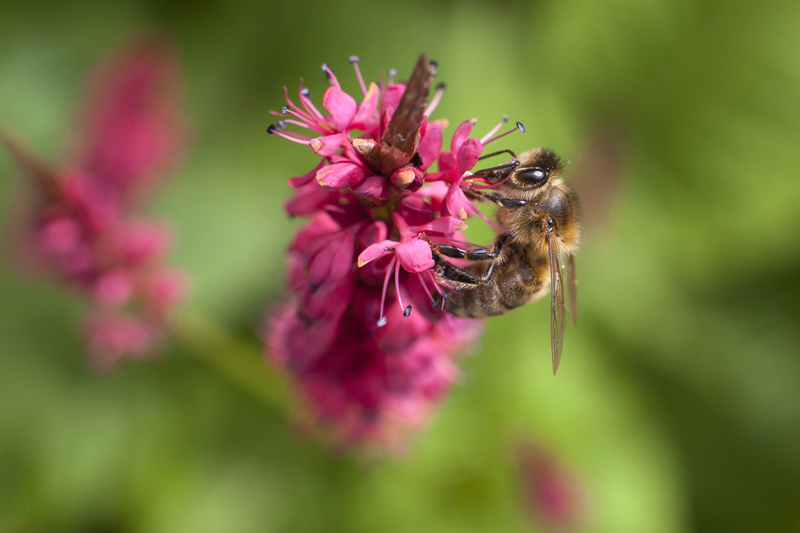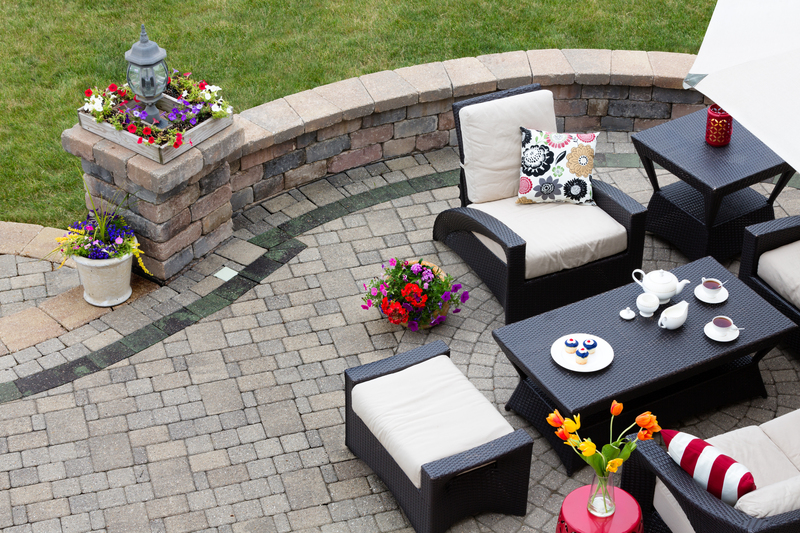Weed-Free Bliss: Achieve It with These 3 Tips
Posted on 04/09/2025
Weed-Free Bliss: Achieve It with These 3 Tips
Is your garden overrun by pesky weeds, disturbing the harmony of your outdoor sanctuary? Achieving a weed-free yard might seem daunting, but it's not only possible--it's totally within your reach! Say good-bye to endless hours of hand-pulling unwanted invaders. In this comprehensive guide, you'll discover practical, proven steps to reach weed-free bliss and maintain a pristine, beautiful landscape all season long.

Why Is a Weed-Free Garden Important?
Maintaining a weed-free lawn and garden isn't purely about aesthetics--though the clean, green look is a definite bonus! Weeds compete with your desirable plants for sunlight, nutrients, and water. Left unchecked, they can choke out flowers, vegetables, and even established shrubs or turf. Worse, weeds often host pests and diseases, undermining your landscape's overall health.
The True Cost of Weeds
- Nutrient Stealing: Weeds rob your plants of nitrogen, phosphorus, and other critical elements.
- Pest & Disease Havens: Many common weeds harbor insects and pathogens.
- Reduced Curb Appeal: Letting weeds take over can lower property value and curb appeal.
- Extra Maintenance: Infestations require more labor, water, and fertilizer to keep your landscape thriving.
With just a little strategy and preventative action, you can enjoy weed-free bliss--and reap all the rewards of a healthy, low-maintenance garden. Let's dive into the top 3 tips that guarantee effective, enduring weed control!
Tip #1: Mulch Is Your Best Friend
Mulching is widely recognized as the easiest and most eco-friendly method for weed prevention. A quality layer of mulch serves as a physical barrier, blocking sunlight from reaching weed seeds beneath the surface and suffocating any trying to sprout.
Choosing the Right Mulch
- Organic mulch: Wood chips, bark, straw, and shredded leaves improve soil as they decompose.
- Inorganic mulch: Gravel, landscape fabric, or rubber mulch, which doesn't enrich soil but provides long-lasting coverage.
Organic mulches not only suppress weeds, but also enhance soil fertility, moisture retention, and microbial activity. Inorganic mulches are best for areas like walkways or play spaces where durability matters more than soil health.
Applying Mulch--Best Practices
- Depth matters: Apply mulch 2-4 inches thick to block light effectively. Too thin won't deter weeds; too thick can suffocate roots.
- Keep away from stems/trunks: Avoid piling mulch against plant bases to prevent rot and pests.
- Refresh annually: Organic mulch breaks down and will need topping up each year for ongoing weed-free satisfaction.
Pro Tip for a Weed-Free Lawn Edge
Add a narrow strip of mulch between lawn edges and flower beds to stop grass and weeds from invading your planting areas. This creates a clean line and forms a potent natural barrier.
Tip #2: Prevent Weeds Before They Start
The best long-term way to maintain a weed-free yard is to stop them before they emerge. Focus your efforts on preventing weed seeds from taking hold in the first place.
Cultural Practices That Suppress Weeds
- Dense planting: Close spacing of flowers, vegetables, or groundcovers shades the soil, leaving no room for unwanted competitors to sprout.
- Healthy turf: Keep your lawn thick and healthy with regular mowing, feeding, and proper watering. A dense lawn naturally chokes out many common lawn weeds.
- Cover crops: In vegetable beds or bare patches, planting cover crops (like clover, rye, or buckwheat) deprive weeds of light and space.
Landscape Fabric for Weed-Free Flower Beds
Install landscape fabric beneath new garden beds and under mulch. This semi-permeable material lets water through but blocks sunlight, dramatically reducing weed seed germination. Be sure to cut openings for desired plants.
Tackle the Seed Bank
Most yards harbor millions of dormant weed seeds waiting for the right opportunity to sprout. Here's how to keep them buried:
- Minimize soil disturbance: Dig or till only when absolutely necessary, since bringing up buried weed seeds leads to new outbreaks.
- Prompt removal: Pull any visible weeds before they mature and go to seed. Just one dandelion can mean thousands more in your next season without control.
Expert Tip: Stay Vigilant
Walk your garden weekly and remove young weeds by hand. Young seedlings are easy to pull and have shallow roots. Early action prevents small issues from becoming big infestations--and helps you win the battle for weed-free bliss!
Tip #3: Smart Use of Weed Control Products
In some cases, especially with tough perennial weeds or in new landscapes, selective use of weed control products can be part of your weed-free strategy. Here's how to use them wisely, safely, and effectively.
Pre-Emergent Herbicides
- What they do: Prevent weed seeds from sprouting by forming a protective barrier in the soil. These are most effective against annual weeds, like crabgrass.
- When to apply: Early spring or fall, before seeds germinate. Water the product in for activation.
- Where to use: Lawns, flower beds, gravel paths, and driveways. Avoid application where you're sowing seeds you want to grow.
Post-Emergent Herbicides
- What they do: Kill existing weeds by spraying leaves or stems. Choose between selective (for lawns) and non-selective (for patios or uncultivated areas).
- Application tips: Apply when weeds are young and actively growing. Always follow label directions and avoid drift onto desirable plants.
- Eco-friendly options: Look for natural products made from vinegar or oils, or make your own DIY weed killer with salt and hot water for cracks and crevices.
Spot Treatment vs Broadcast
Spot-treating individual weeds is safer and uses less chemical than blanketing an entire area. This method also protects nearby beneficial insects, pollinator plants, and your soil health--helping you sustain a healthy, weed-free garden in the long run.
Pro Safety Reminder
When using any herbicide, always read the instructions, wear protective gear, and apply only when necessary. Responsible use is crucial for your family's safety--as well as the environment's.
Frequently Asked Questions About Weed-Free Maintenance
1. How often should I mulch my flower beds?
Apply mulch once a year in spring for optimal weed prevention. Check thickness mid-season and top up as needed.
2. Are chemical weed killers necessary for a weed-free yard?
No! Many homeowners achieve weed-free bliss with cultural methods and prevention alone. Reserve chemicals for persistent, hard-to-control infestations or in situations where natural solutions aren't sufficient.
3. My lawn is full of weeds--where should I start?
- Remove large, mature weeds by hand or with targeted herbicide.
- Overseed thin spots to crowd out future weeds.
- Adopt a regular mow-high and feed schedule for a thicker, stronger lawn.
4. Is weed barrier fabric right for all gardens?
It's ideal for permanent plantings or under mulch in new beds. Avoid in vegetable gardens where you'll dig often, or with perennials that spread.

Additional Tips for Total Weed-Free Bliss
- Install edging: Block grass and weed roots from creeping into beds by adding steel, brick, or plastic edging strips.
- Water wisely: Use drip irrigation or soaker hoses to water roots--not weed seeds on the surface.
- Use groundcovers: Low-growing perennials and spreading shrubs like creeping thyme, vinca, or pachysandra leave little bare earth for weeds to invade.
- Compost carefully: Make sure your compost pile reaches high enough temperatures to kill weed seeds before spreading compost around your garden.
Combine multiple approaches for enduring success. Each step, from healthy planting to vigilant maintenance, contributes to lasting weed-free bliss.
Conclusion: Your Path to Weed-Free Bliss Starts Here!
If you're ready to enjoy a lush, welcoming landscape without the headache of weeds, take action today! By following these top three tips--smart mulching, proactive prevention, and strategic use of products--you'll transform your yard into a sanctuary of weed-free beauty. Consistent care and regular upkeep are your best allies in maintaining this harmony year after year.
Remember, achieving and sustaining weed-free bliss isn't about perfection--it's about staying a few steps ahead. With a strong foundation and the right tools, you'll spend less time battling weeds and more time enjoying the outdoor paradise you deserve. Happy gardening!

